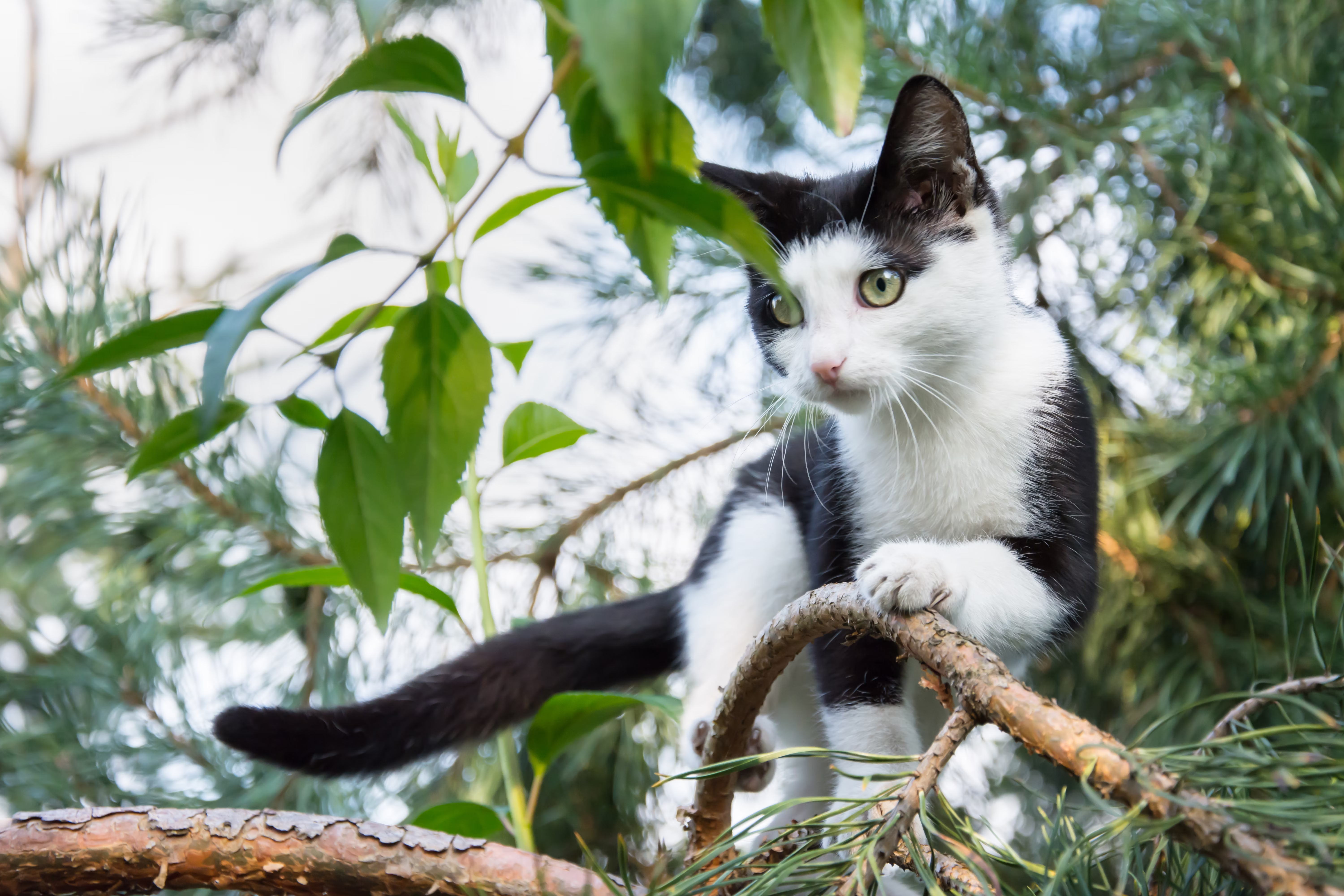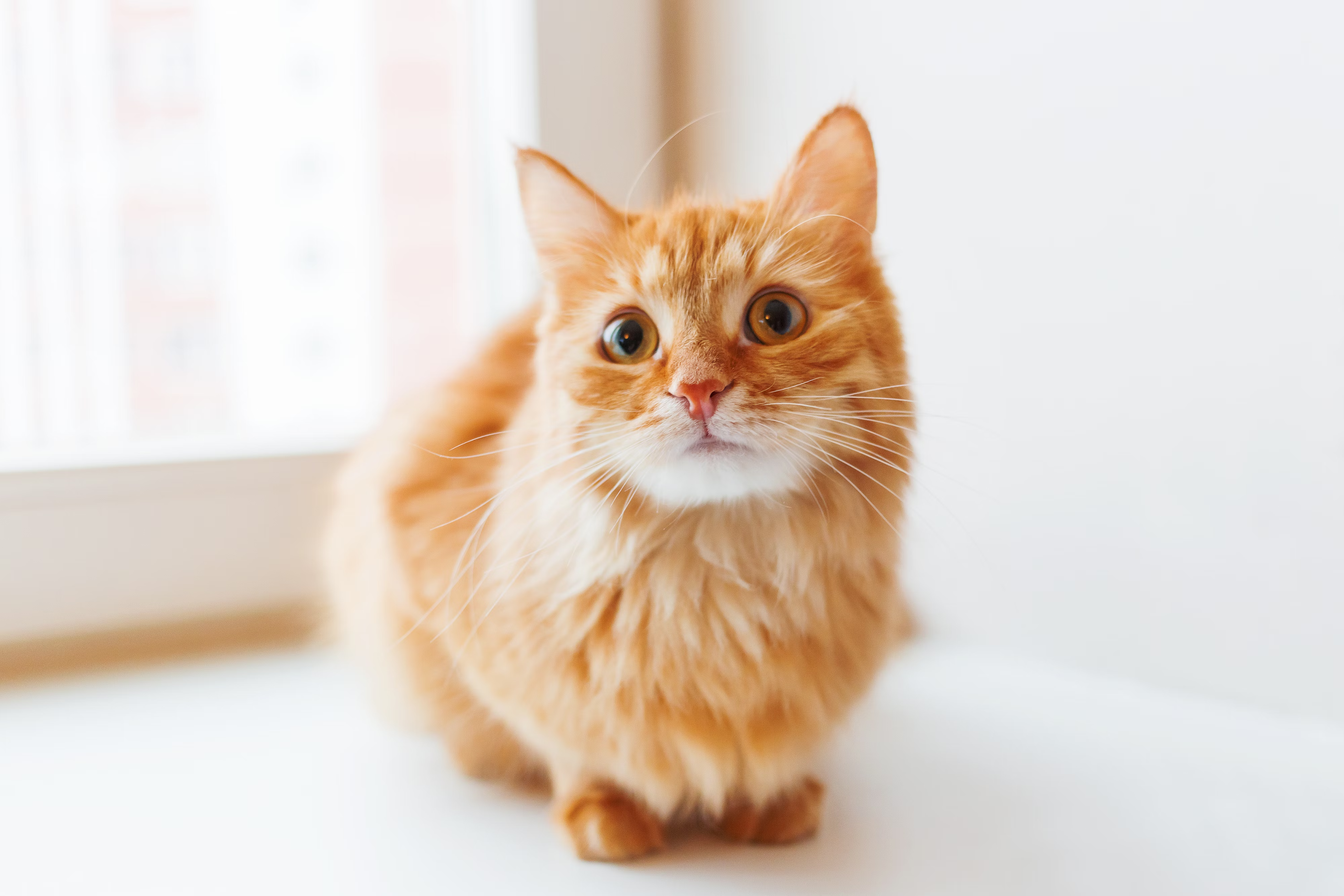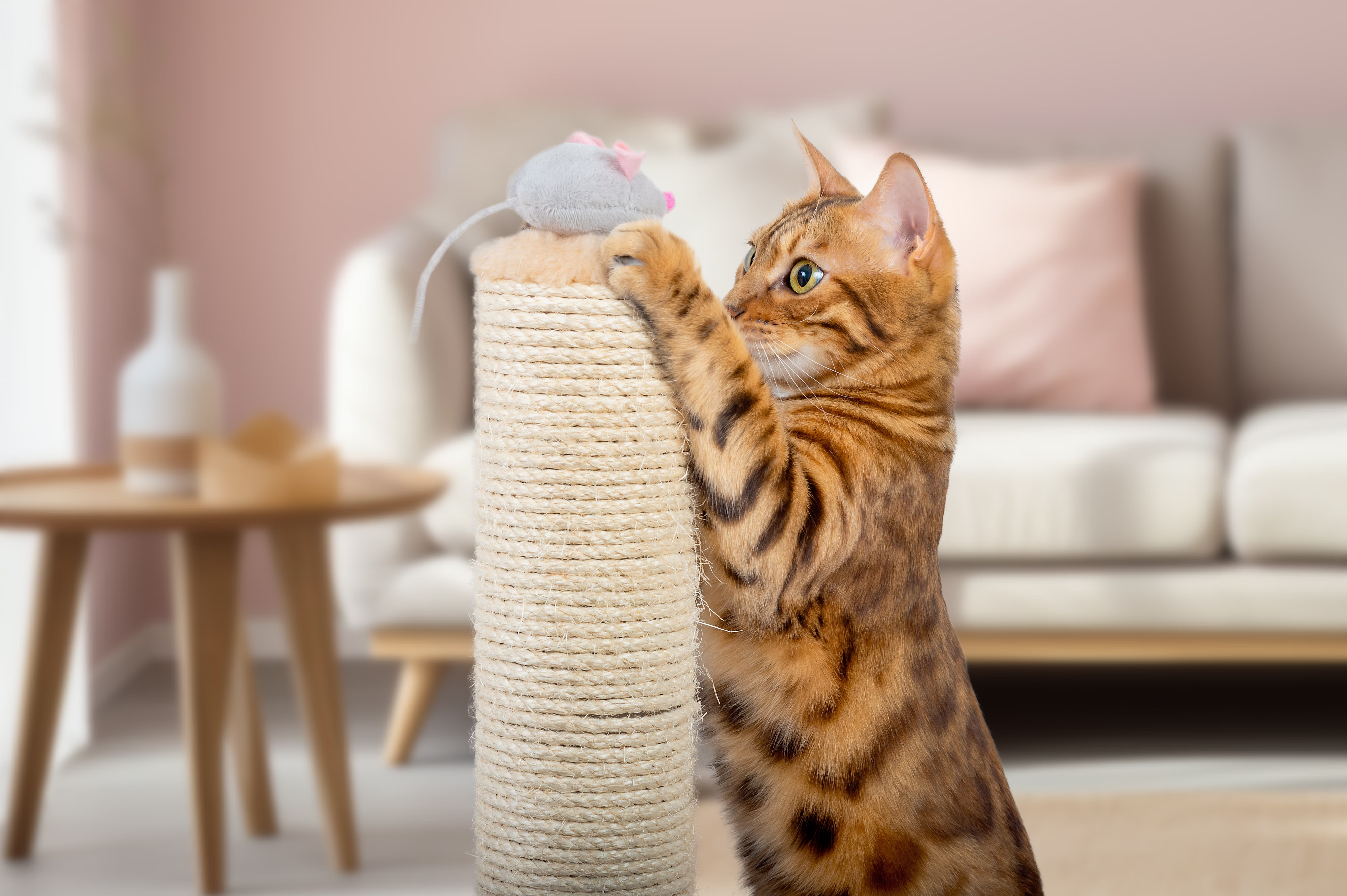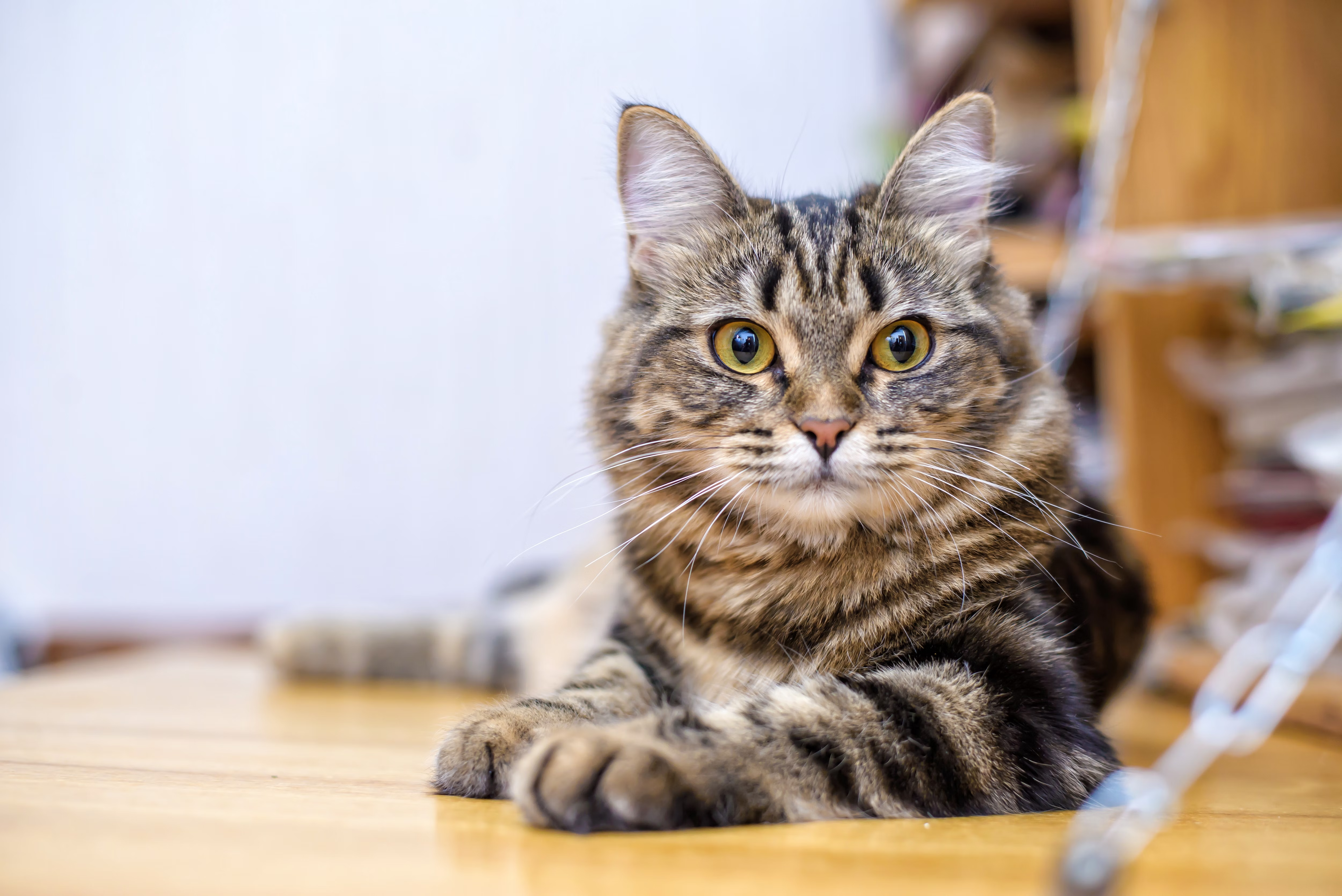Cats see the world differently than people do—literally. In order to take just a little bit of mystery out of our feline friends, let’s take a look at how cat vision works, including how they see colors and in what instances their eyesight tops our human abilities.
How cat eyes work
To understand how a cat’s vision works, it’s helpful to remember the behaviors that are hardwired into a cat’s DNA. Though most modern day house cats don’t rely on their hunting skills for survival, their ancestors very much did. In order to effectively hunt at dawn and dusk when prey is most active, cats have to be able to see well in low light. The structure of their eyes helps them do just that.
A cat’s eye includes a large cornea and a reflective layer called the tapetum lucidum, which amplifies light to improve their night vision. Like humans, cats have two types of light-sensitive cells in the retina: rods and cones. Rods detect light and motion, while cones detect color. Cats have more rods than humans, which makes them excellent at detecting movement and seeing in dim light. However, they have far fewer cones, which limits their ability to perceive color.
What colors can cats actually see?
Experts believe that because cats have fewer cones, they see a much narrower color spectrum than humans do. They are able to perceive shades of blue, gray, and possibly yellow. This makes their vision similar to how a person with red-green color blindness sees the world. The good news is, this inability to decipher a wider spectrum of colors doesn’t make a big impact on their daily lives. After all, their ability to see prey in low light is far more important to them than taking in the colorful scenery.

How color affects cats’ behavior
Although cats can see some colors, there’s little evidence that color strongly influences their behavior. Instead, movement, texture, and sound tend to grab their attention and interest. That said, if you want to choose toys or accessories with your cat’s vision in mind, opt for colors that stand out against your home’s background and that they can likely distinguish—like blue or yellow. Bright red or orange objects might not appear very different from dull gray, so they may be less visually stimulating.
How cat vision compares to humans
Cats see the world in a softer focus than humans. Unlike humans who have 20/20 vision, a cat’s visual acuity ranges from 20/100 to 20/200. That means that what a human can see clearly from 100 feet away, a cat would need to be just 20 feet away to see. However, in addition to cats out-performing people in low-light conditions, they also have wider peripheral vision than we do. That’s because their eyes are set more on the side of their head.
Genetic vision disorders in cats: What DNA testing can reveal
Some cats can inherit genetic eye conditions that affect their sight. One example is progressive retinal atrophy (PRA), a disease that gradually causes the retina to degenerate, leading to blindness. Because PRA is inherited, DNA testing can reveal whether a cat carries genetic variants associated with this and other eye disorders.
Knowing your cat’s genetic risk can help you monitor their vision more closely and work with your veterinarian on proactive care. You can read more about PRA and other eye conditions in our guide to blindness in cats.
Curious about your cat’s genetic health?
A Wisdom Panel™ cat DNA test can screen for genetic variants linked to eye conditions like PRA and other conditions that may impact your cat’s health.




